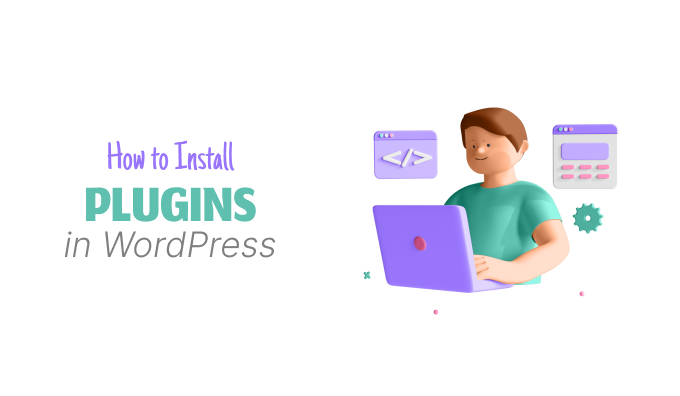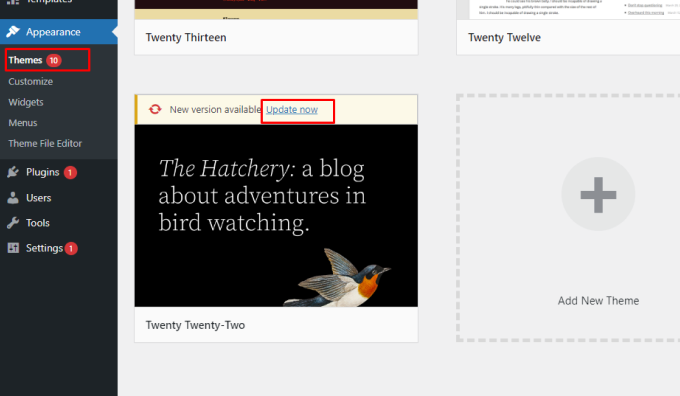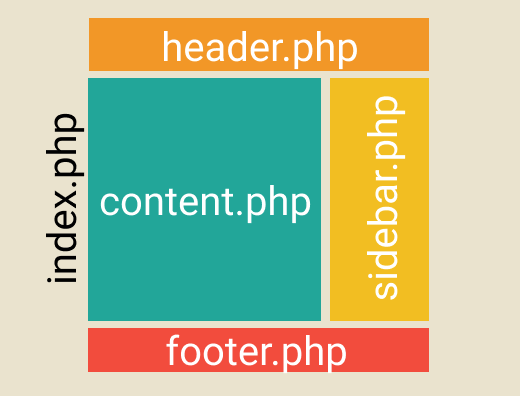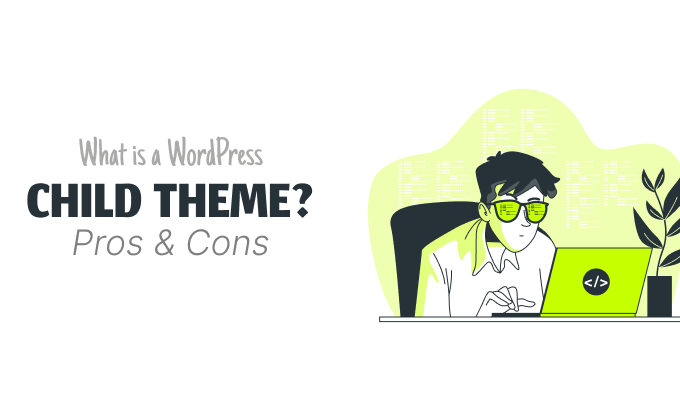
How to Install a WordPress Plugin – Step by Step for Beginners
August 3, 2023
11 Things You MUST DO Before Changing WordPress Themes
August 7, 2023Do you find yourself curious about the concept of a WordPress child theme and its potential benefits for your website?
WordPress child themes offer a faster and more efficient way for users and developers to personalize their WordPress sites. Nonetheless, it's essential to weigh the pros and cons before making a decision.
In this article, we'll provide a comprehensive explanation of what a WordPress child theme is and assist you in determining whether it suits your needs and preferences.
Let’s get started!
What Is a Child Theme in WordPress?
A WordPress child theme is designed to inherit all the functionalities, features, and design elements from its parent theme. This allows you to make customizations and modifications to the child theme without altering the original parent theme.
The process of creating a child theme can be straightforward, involving the creation of a new folder with only two files, namely style.css and functions.php. However, it is also possible for child themes to grow in complexity, incorporating numerous template files, potentially matching or even exceeding the number present in the parent theme.
To initiate the process of creating a child theme, the first step involves selecting an appropriate parent theme. It is advisable to opt for a parent theme that closely aligns with your desired appearance and functionalities, as this minimizes the need for extensive modifications.
While any WordPress theme can serve as a parent theme, certain themes are better suited for this role than others.
As an illustration, theme frameworks prove to be exceptional choices as parent themes. They encompass the fundamental functions of a theme while omitting the styling aspects.
With the aid of these theme frameworks, designers and developers can effortlessly generate multiple child themes with distinct styles, eliminating the need to reconfigure numerous functions repeatedly.

Why Use a WordPress Child Theme?
Employing a child theme offers a swift and effective approach to tailor your WordPress website. Designers and developers utilize child themes to accelerate their development process.
Selecting a suitable parent theme can significantly cut down the time required to create a WordPress site. Theme frameworks, in particular, provide an excellent foundation due to their abundant functionality and ease of customization, making them a great starting point for your project.
Additionally, child themes simplify the process of maintaining theme updates, which used to be a major concern during the early stages of WordPress development.
Usually, updating a WordPress theme results in the loss of all customizations. However, employing a child theme safeguards your modifications, as they are stored within the child theme and remain unaffected when updating the parent theme.

Pros and Cons of Using WordPress Child Themes
Similar to most things, utilizing a WordPress child theme comes with both pros and cons. Let's begin by examining the advantages.
Advantages of using a WordPress child theme include:
- Safe Updates: As you refrain from modifying the parent theme, updates can be performed without risk. Your customizations are securely preserved in the child theme.
- Easy to Extend: Leveraging a child theme based on a robust theme framework provides ample flexibility without extensive coding. Customizations can be achieved by modifying specific template files and functions.
- Fallback Safe: Unlike creating a full theme, a child theme offers a fallback option. If a scenario is not coded in the child theme, the parent theme's functionality becomes available as a fallback solution.
Disadvantages of using a WordPress child theme include:
- Learning Curve: There is an initial time investment required to familiarize yourself with the parent theme, particularly when dealing with a robust framework with its own hooks and filters. However, this drawback is temporary, and once you grasp the parent theme, you can expedite the creation of custom websites.
- Dependence on Parent Theme: There is a potential risk if the parent theme's developer abandons the theme or removes a crucial feature you rely on. Nevertheless, reputable theme frameworks like Divi have stable businesses supporting them, and most WordPress themes are open source, ensuring you can continue using them even if they get abandoned.
The advantages and disadvantages of employing a child theme can vary based on the parent theme you choose. Therefore, let's now explore this aspect in more detail.
The Importance of Selecting a Good Parent Theme
Frequently, we encounter beginners who inadvertently opt for a parent theme with limited functionality, leading them to override the majority of the parent theme files.
For this reason, it is crucial to make the right theme selection from the outset.
Imagine you choose a parent theme, and upon realizing that you dislike the appearance of the footer, you proceed to create a new footer.php file. Later, you find yourself unsatisfied with the header's appearance and create yet another header.php file.

Soon, it becomes evident that the theme you initially selected might not be suitable as a parent theme. Instead, it could serve better as a starter theme that you transform into your own custom theme.
Alternatively, you have the option to choose another theme that closely aligns with your requirements, reducing the number of modifications needed for your child theme.
Should You Use a WordPress Child Theme?
If you are a developer in the process of learning to create your own WordPress themes, incorporating a child theme can significantly reduce your development time. Utilizing child themes proves advantageous in streamlining the workflow and producing high-quality themes.
For users, we recommend opting for child themes if you frequently add new functions to your theme's functions.php file or continuously modify its style.css file.
The answer to this question depends on your level of expertise and comfort with technology, as well as the extent of customizations you require. A custom CSS plugin suffices if you only need to modify the styles of a few elements. However, if you find yourself changing the entire color scheme or making substantial alterations, then using a child theme would be the recommended choice.

We trust that this tutorial has assisted you in understanding what a WordPress child theme entails and whether creating one aligns with your requirements.
If you found this article helpful, we invite you to subscribe to our YouTube Channel for more WordPress video tutorials. You can also connect with us on Facebook for additional updates and content.





